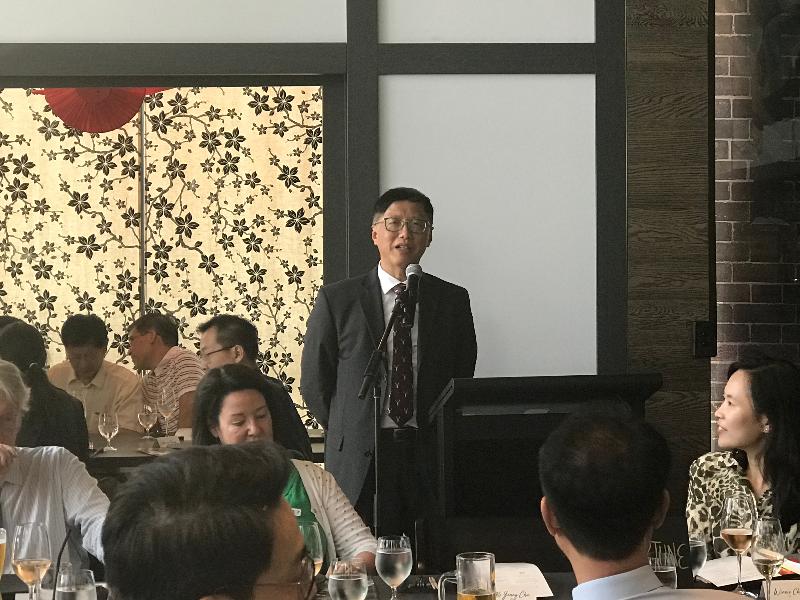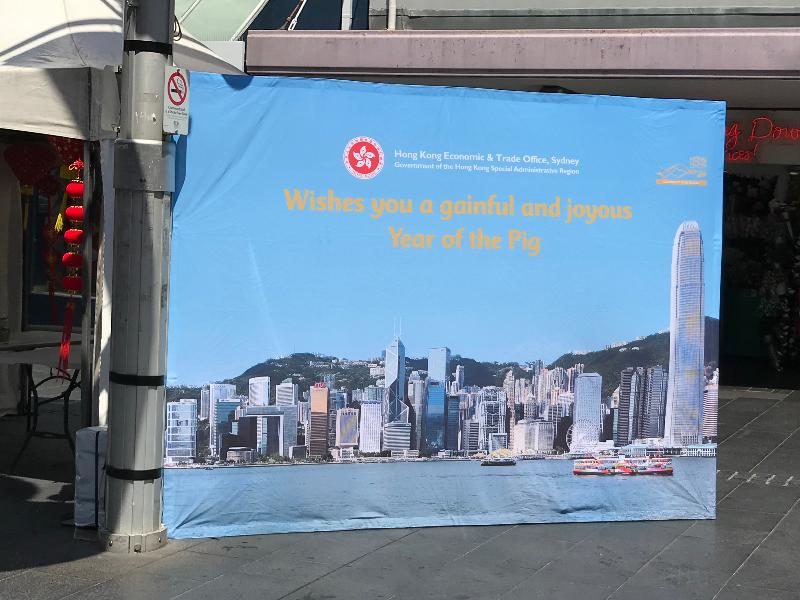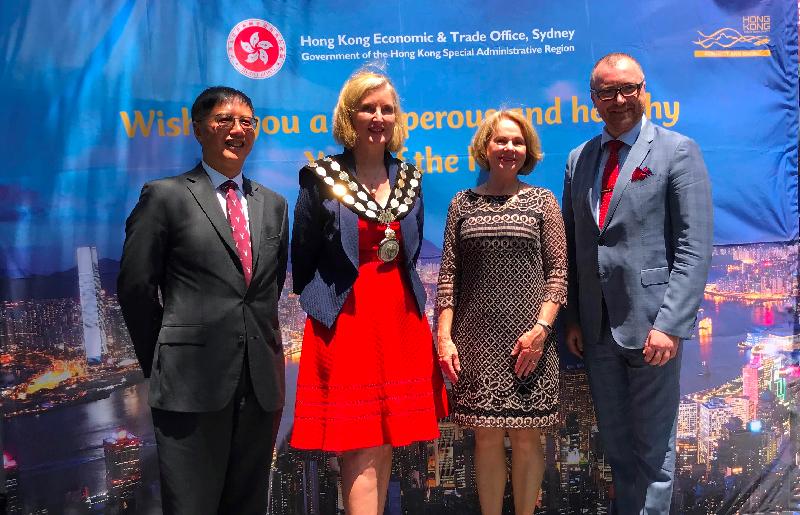Following is a question by Hon Tanya Chan and a reply by the Secretary for Transport and Housing, Mr Frank Chan Fan, in the Legislative Council today (January 30):
Question:
On the 10th of last month, the MTR Corporation Limited (MTRCL) commenced the work to open up the concrete according to the holistic assessment strategy regarding the platform slabs and diaphragm walls of the Hung Hom Station Extension under the Shatin to Central Link Project (the assessment strategy), so as to verify the works quality of the coupler connections. In this connection, will the Government inform this Council:
(1) whether the contractor concerned was required under the law to obtain prior approval from the authorities for deviating, during construction, from the requirements for proper installation of couplers specified by the coupler supplier; if so, of the relevant procedure and stipulations, and whether the authorities have received such applications; if there were deviations but no application has been received, of the authorities' follow-up actions;
(2) given that Table 6.3 of the assessment strategy merely sets out the maximum percentages of the coupler population with improper connections corresponding to the scenarios in which the 0 to 5 failures are found in the 84 samples (estimated under a 95 per cent confidence level), whether the Government can set out one by one the relevant percentages corresponding to the scenarios in which 0 to 84 failures are found in the samples; of the respective test results under which the Government will require the MTRCL to carry out reinforcement works, demolish and rebuild the relevant structures, and reduce the project management fee charged; and
(3) given that Remark 2 in the coupler test results as at the 7th of this month, published on a Highways Department webpage, read as follows: "On the testing location at the bottom of Area C3 of the East West Line slab near the western diaphragm wall, one re-bar and a coupler were found to be unconnected on January 4, 2019 and could not be tested. Details are being investigated", but the sentence "Details are being investigated" was no longer included in Remark 2 published on the webpage updated two days later, whether the relevant investigation had been completed during the interim; if so, of the details; if not, the reasons why that sentence was no longer included?
Reply:
President,
My reply to the three parts of the Hon Tanya Chan's question is as follows:
(1) The Government has always attached great importance to the safety and quality of construction works. As the Hung Hom Station (HUH) Extension of the Shatin to Central Link (SCL) project falls within leased land owned by the Kowloon-Canton Railway Corporation and is governed by the Buildings Ordinance, the construction and quality of the HUH Extension works shall comply with the requirements specified by the Buildings Department (BD).
The BD has specified the relevant requirements about the proposed use of threaded reinforcement bars (rebars) and couplers in the HUH Extension project, including compliance with the structural material standards, technical specification and quality assurance plan of coupler manufacturer, as well as material tests via on-site sampling.
According to the manufacturer's technical specification, a conforming splicing assembly of threaded rebar and coupler of the type used in the HUH Extension Project should satisfy the following criteria:
(i) there shall be a maximum of two full threads exposed; and
(ii) the embedded length of the threaded rebar screwed into the coupler shall be at least 40 millimetres.
Apart from the above criteria set by the manufacturer, the assemblies shall comply with the various strength and ductility test requirements specified by the BD. If the contractor has complied with the manufacturer's technical specification, the BD's requirements for on-site material sampling and testing, and supervision and recording of the splicing assembly works etc., the safety and quality standards of the connections between the threaded rebars and couplers can be assured.
In anticipation of the need of amending the technical specification during the course of the works, the contractor should consult the BD and obtain its prior acceptance. In case where the contractor deviates from the technical specification during the course of the works, the concerned competent person shall submit to the BD an investigation report and, when necessary, a remedial proposal on the deviations concerned. So far, the Government has not received any application made by the MTR Corporation Limited (MTRCL) or contractor on the necessary amendments to or deviations from the technical specification for coupler used in the HUH Extension Project.
(2) Being the Project Manager of the SCL project, the MTRCL is responsible for proposing and carrying out all sorts of feasible options to clarify and resolve the problems of the HUH Extension works. After several rounds of discussion with the Government, the MTRCL proposed a three-stage approach for the holistic assessment. The first stage is for the MTRCL to check relevant construction records and to review the latest amended design drawings. In the second stage, it is required for the MTRCL to open up part of the platform slabs at the East West Corridor (EWC) and the North South Corridor (NSC) for confirming the as-constructed connection details of the rebars, and whether the couplers and rebars were properly connected. There are two purposes for the opening up exercise in the second stage: (i) opening up the areas without complete construction documentations to verify the as-constructed conditions of the connection between the platform slabs and diaphragm walls of the HUH Extension. This involves 24 locations at the platform slabs of the EWC; and (ii) in view of the allegation of bar-cutting, the MTRCL has to open up part of connections between platform slabs and diaphragm walls for detailed inspection and make use of non-destructive tests for verification of the workmanship of the coupler connections. This involves opening up 28 random locations each in the platform slabs of the EWC and the NSC, i.e. 56 locations in total, to expose at least 168 rebars/couplers for inspection. In the third stage, the MTRCL will consolidate the test results of the first two stages, including the verified construction details, works quality information, and the technical data provided by the manufacturers; and conduct a detailed structural analysis of the HUH Extension to ascertain whether the overall structural integrity of the works is acceptable, and determine if it is necessary to conduct remedial or strengthening works. Relevant government departments have been strictly monitoring the process.
Table 6.3 of the holistic assessment strategy mainly illustrates the relationship between the number of failures in the samples and the maximum failure rate in the population based on statistical inference. The "failure" here means that individual coupler and rebars are not installed according to the technical specification. Whether it is required to strengthen or even rebuild the platform slabs due to a certain number of coupler and rebars are not connected in accordance with the technical specification has to be determined after conducting a detailed structural analysis in the third stage.
(3) The Government has been highly concerned about the second stage opening up works under the holistic assessment strategy. To enhance transparency, upon receipt of the new test results, the Government will publish them on the SCL project webpage of the Highways Department (HyD) for reference of the public.
On January 4, 2019, the HyD found that a coupler and a steel bar at the test point in Area C3 of the bottom of the EWC slab near the western diaphragm wall were not connected and could not be tested. As it takes time to complete a detailed investigation, but in order to announce the latest test results on the same day, the HyD added Note 2 to the webpage on the same day giving a brief account of the findings and indicating that the details would be subject to further investigation. The BD, the HyD and the MTRCL conducted on-site investigations in the following few days; and confirmed the situation on January 9. The phrase "details are being investigated" in Note 2 was thus deleted on the same day. Meanwhile, given that the number of notes has increased as the opening up works proceed and in order to improve the format of the Notes, the HyD has presented by table form the information verified and other findings during the opening up process (including the abovementioned information and findings verified on January 9). The new format has been effective from January 19 for perusal by the public.


